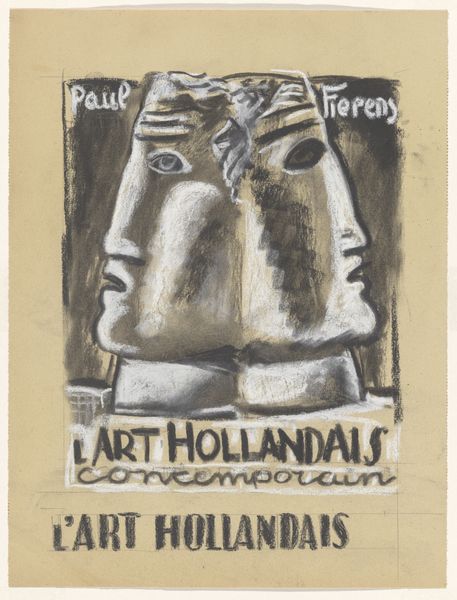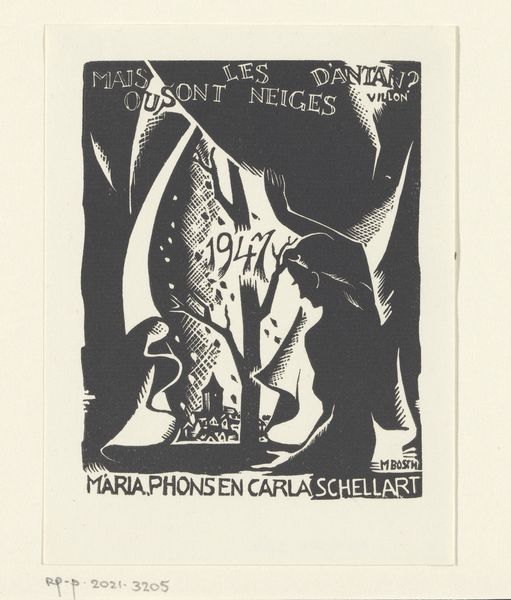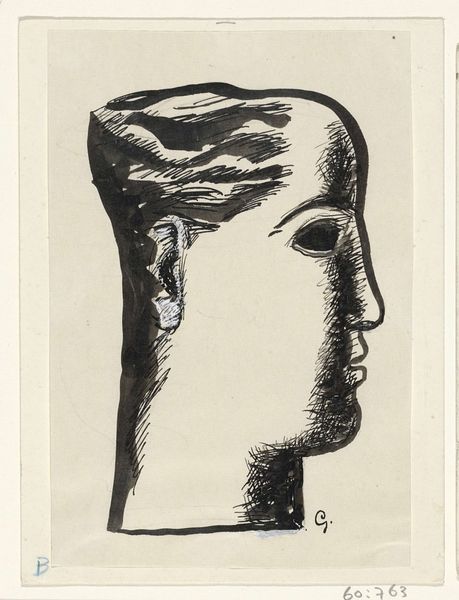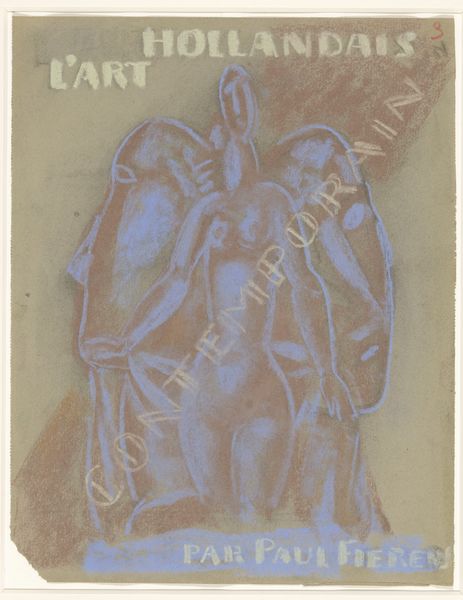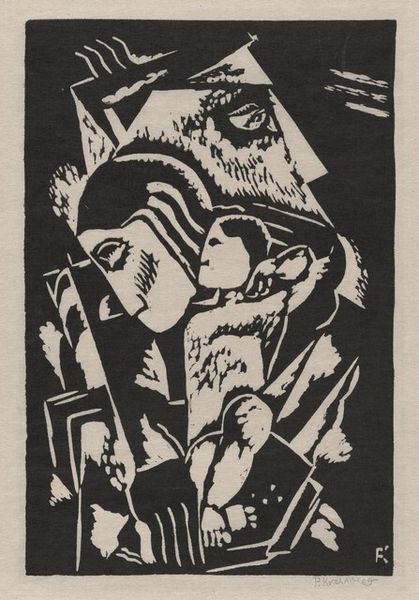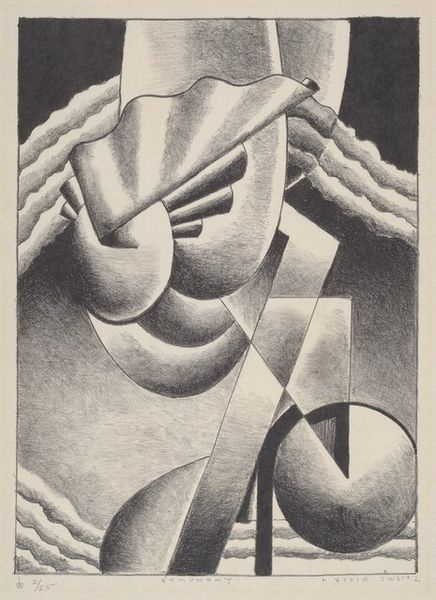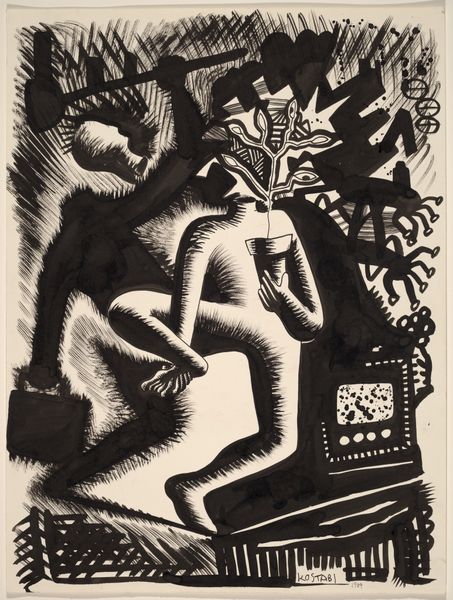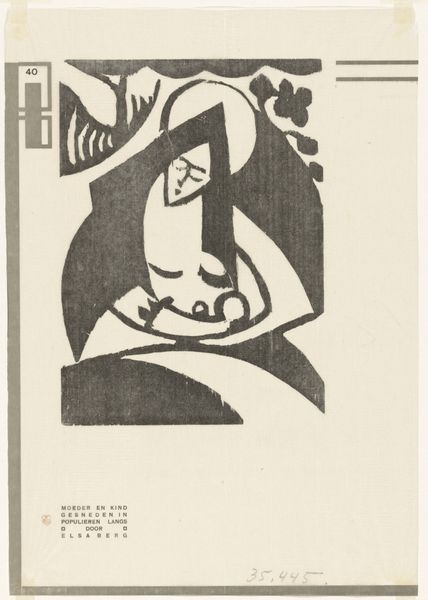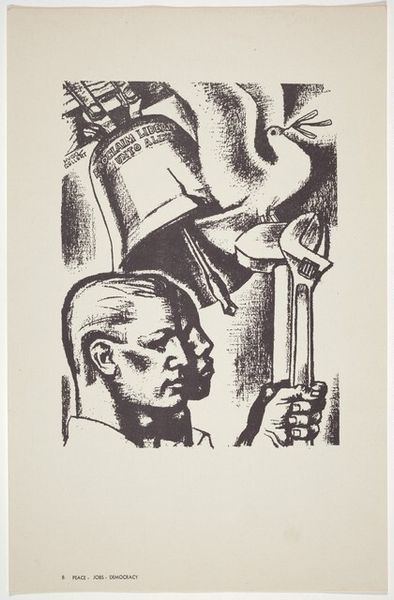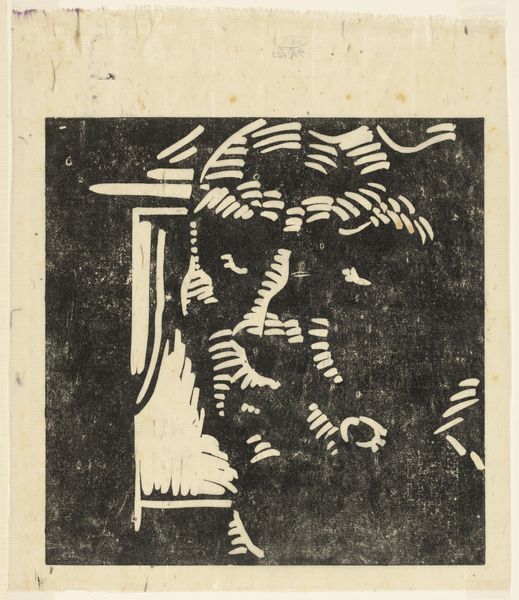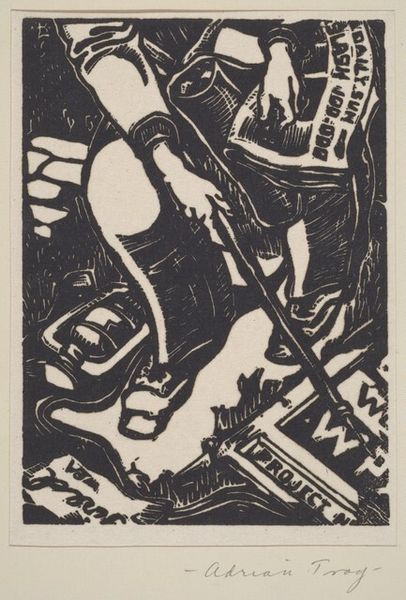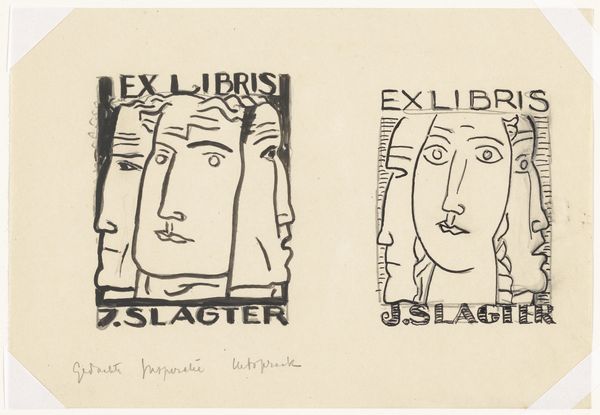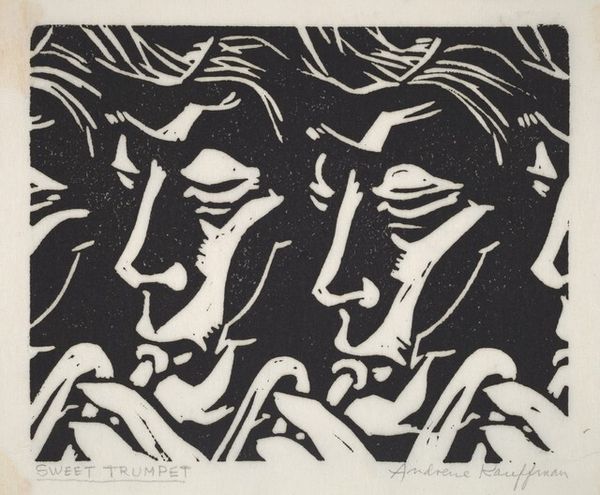
Reproductieprent boekomslag "l'Art Hollandais contemporain" van Paul Fierens 1933
0:00
0:00
Dimensions: height 245 mm, width 189 mm
Copyright: Rijks Museum: Open Domain
Editor: We're looking at a reproduction print for the book cover, "l'Art Hollandais contemporain," created by Leo Gestel in 1933. It's primarily done in ink on paper, showcasing a rather intriguing dual-portrait. It's somewhat unsettling and quite abstract. What is your interpretation of the work in light of Dutch art history? Curator: This image embodies the anxieties and avant-garde spirit percolating through Europe between the wars. Consider the societal upheavals after WWI – the challenges to traditional structures. How might an artist respond? Gestel, known for his embrace of modern styles, here presents a fractured, almost cubist sensibility. The subject isn't simply a portrait; it’s a deconstruction of the very notion of representation, reflective of a world struggling to rebuild after trauma. Notice the harsh lines, the almost mask-like quality – a rejection of idealized beauty in favor of raw expression. How do you think this cover influenced the book's reception at the time? Editor: It must have signaled a modern approach. It prepares the reader to encounter a more daring vision of art. So, it is like a promise from Paul Fierens of an interesting perspective! Curator: Precisely! Book covers, and their design, do important cultural work, flagging contents in relation to wider discourses. This imagery speaks of a world breaking from tradition. Think about who had access to contemporary art criticism during this period, and the potential of that discourse for public and scholarly perception of Dutch artists. Does it align with current public perceptions? Editor: It certainly does provide some insight. I wouldn’t have considered the broader societal impacts, especially on visual art and accessibility to the population, quite like that. Thanks for widening my lens! Curator: Always happy to consider art's function in cultural production with you.
Comments
No comments
Be the first to comment and join the conversation on the ultimate creative platform.
